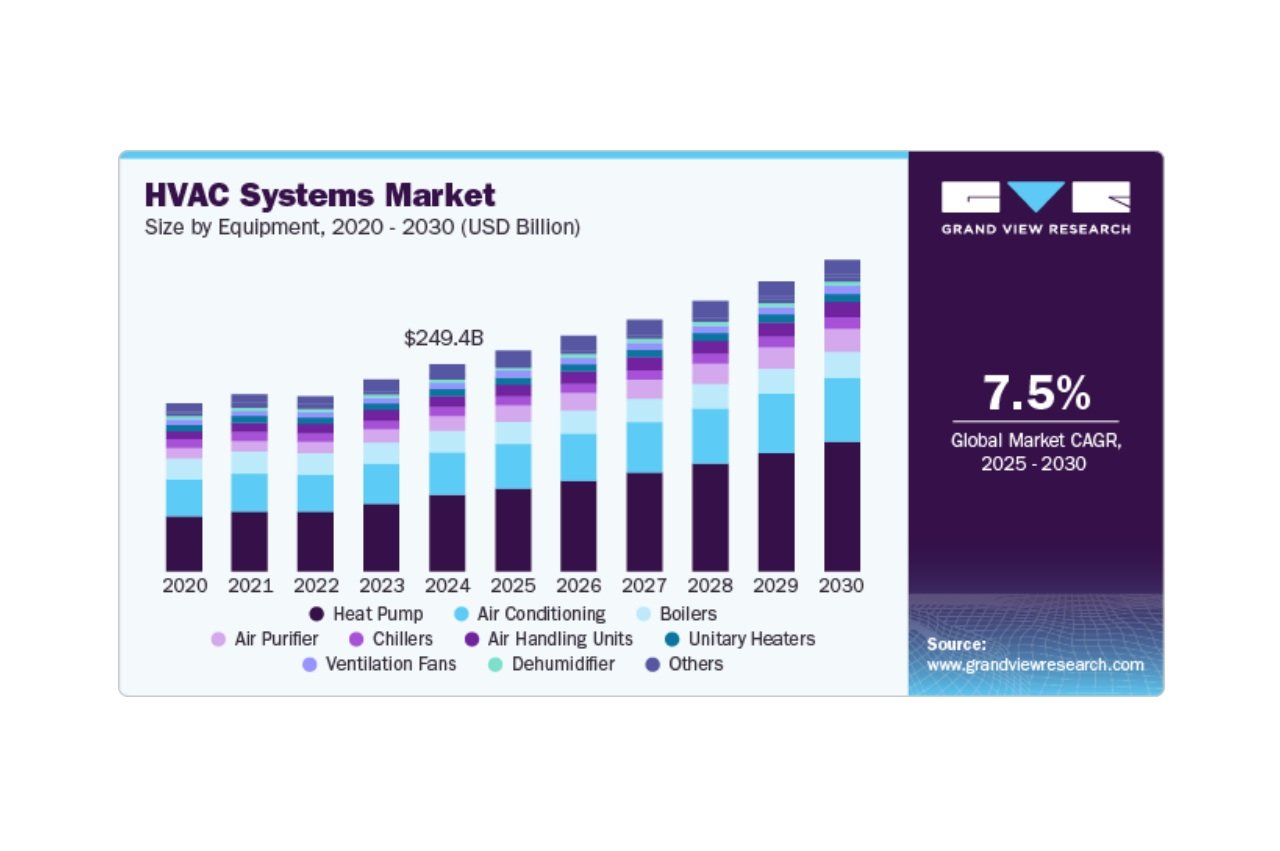HVAC market to reach USD 382.66 billion by 2030
The global HVAC systems market is projected to reach USD 382.66 billion by 2030, registering a compound annual growth rate (CAGR) of 7.5% from 2025 to 2030, according to a report by Grand View Research, Inc. The growth is attributed to increasing demand for energy-efficient and renewable energy-based products, alongside rising incomes and improved living standards in emerging economies.
Key drivers include the growing adoption of eco-friendly systems, integration of advanced technologies such as automation and software, and a notable shift toward ductless HVAC units. These compact systems are suitable for buildings without ductwork and are gaining popularity for their flexible installation options.
Energy-efficient and tech-integrated systems, including those using geothermal or renewable energy, are becoming prominent as both consumers and OEMs focus on sustainability and cost reduction. The report also highlights the increasing demand for Building Automation Systems (BAS), with smart functionalities such as remote control via smartphones or computers contributing to this trend.
In 2024, the heat pump equipment segment accounted for the largest revenue share at 38.5%, driven by a global focus on energy-efficient and renewable heating solutions. Demand for air purifiers is also rising amid concerns about indoor air quality, pollution, allergens, and airborne viruses.
The residential sector led the market by end-use in 2024, holding a 39.71% revenue share, supported by a rise in both multi-family housing and individual homeownership. Regionally, the Asia Pacific market dominated with a 46.8% share, fueled by economic development, industrial growth, and increasing commercialization.
Major companies in the market include Carrier Corporation, Daikin Industries, Ltd., Fujitsu, Haier Group, Havells India Ltd., Hitachi Ltd., Johnson Controls, LG Electronics, Lennox International Inc., Mitsubishi Electric Corporation, Rheem Manufacturing Company, Samsung, and Trane.
